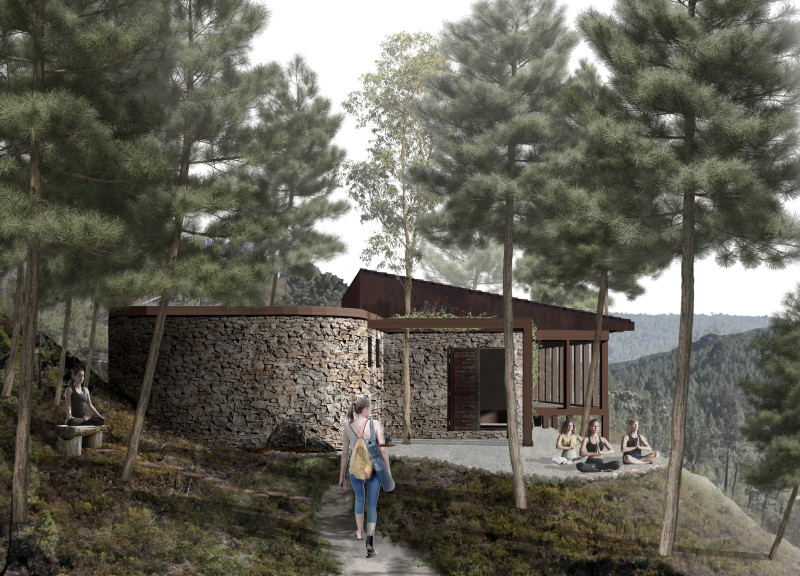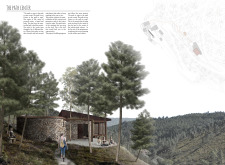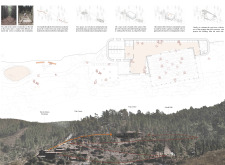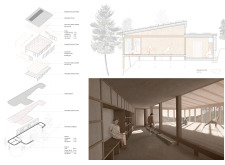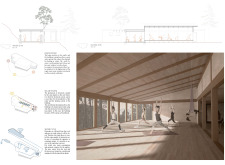5 key facts about this project
The Path Center is designed to promote wellness and reflection, providing a space for yoga practice and community engagement. Located in a tranquil setting, the project blends with its natural surroundings. The design focuses on the journey to personal well-being, emphasizing how individuals connect with nature and with each other.
Central Space Design
The yoga room is the main focus of the Center, carefully situated to highlight its importance. This room encourages both individual meditation and group activities, fostering a sense of community. The design allows for easy movement through the space, facilitating a connection between indoors and outdoors, which enhances the overall experience for users.
Sustainability Strategies
The architectural design incorporates sustainable features through both passive and active methods. Large windows facing south maximize natural light, helping to reduce the need for heating in colder months. The north side is well-insulated to minimize heat loss, while overhanging eaves protect the interior from excessive sun during summer. These strategies create a comfortable environment year-round.
Water Management Systems
Efficient water management is a key aspect of the design. Rainwater is collected from the roof and stored in a tank, allowing for responsible usage throughout the building. Dry toilets contribute to water conservation by reducing overall water use while creating compost for gardens. Greywater from sinks and showers is treated in a small pond that uses plants to filter and improve water quality.
Material Selection
The materials chosen for the Center play an important role in its function and aesthetics. Hybrid solar panels are used to generate energy, while ceramic tiles, natural cork insulation, wooden structures, and clay plaster support the overall design. Using locally sourced materials reduces transportation impacts and strengthens connections to the surrounding environment.
Elevated above the ground, the structure offers views of the trees and landscape. This height provides a peaceful setting that encourages users to engage in personal reflection and growth, enhancing their overall experience while at the Center.


